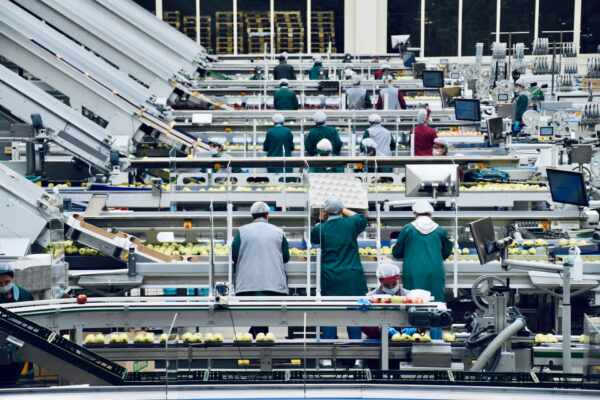As businesses worldwide strive to reduce their environmental impact and improve operational efficiency, implementing energy-efficient practices across all functional areas has become critical. For manufacturing facilities or processing plants, the conveyor belt system plays a significant role in overall energy consumption, and thus, there is a growing need to adopt energy-efficient strategies that support sustainable practices while reducing costs.
In this comprehensive guide, we will explore various energy-efficient design, maintenance, and operational strategies for conveyor belt systems, empowering you to adopt sustainable practices within your facility. Our goal is to equip you with the knowledge, tools, and insights necessary to optimise your conveyor belt system’s energy consumption, reduce environmental impact, and simultaneously cut operational costs.
By focusing on energy-efficient design principles, preventive maintenance, clever operational strategies, and the latest conveyor belt technologies, you can transform your facility’s conveyor belt system into an exemplar of sustainability and cost-efficiency. As experts in conveyor belt solutions, we are committed to helping you on this journey towards a greener and more efficient operation.
Achieving Energy-Efficient Conveyor Belt Systems: Strategies and Tips for Sustainable Operations
Energy-Efficient Design Principles
When planning or upgrading a conveyor belt system, incorporating energy-efficient design principles can significantly reduce overall energy consumption, contributing to long-term sustainability and cost savings. Some key design aspects to consider include:
1. Belt Selection
Choose conveyor belts with low rolling resistance, as they require less energy to operate compared to traditional rubber belts. Furthermore, opt for belts with appropriate tensile strength to reduce elongation, thereby minimising energy wastage.
2. System Layout Optimisation
Design the conveyor belt system layout to reduce the number of transfers and the distance between turns and inclines. A streamlined system will consume less energy while also reducing wear and tear on the belt.
3. Drive System Efficiency
Select energy-efficient motors and drives for your conveyor belt system, including variable speed drives (VSDs) and premium efficiency motors. These components are designed to minimise energy consumption during operation.
4. Conveyor Belt Speed Control
Consider implementing demand-driven or intelligent speed control systems that regulate the conveyor belt’s speed according to the loading and operational requirements. This strategy ensures minimal energy usage while maintaining optimal productivity.
Preventative Maintenance for Energy Efficiency
Regular preventive maintenance is essential for maintaining an energy-efficient conveyor belt system. By proactively addressing potential issues, you can minimise energy wastage and reduce the risk of more significant, energy-intensive problems arising. Key maintenance practices include:
1. Belt Alignment Inspections
Schedule regular belt alignment inspections to ensure that the conveyor belt is running straight and true. Misalignment increases friction, resulting in higher energy consumption.
2. Lubrication and Cleaning
Lubricate drive systems, rollers, and other critical components regularly to reduce friction and minimise energy demands. Additionally, keep the conveyor belt system clean to prevent the build-up of debris that can cause inefficiencies and require more energy for operation.
3. Idler and Pulley Inspection
Regularly check idlers and pulleys for signs of wear, damage, or inefficiency. These components play a key role in the smooth operation of your conveyor belt and can be significant contributors to energy consumption if not functioning optimally.
Operational Strategies for Energy Efficiency
In addition to design and maintenance, smart operational strategies can further optimise your conveyor belt system’s energy efficiency. A few practices worth implementing include:
1. Load Balancing
Distribute the load evenly across the conveyor belt to avoid unnecessary stress on the drive components. This strategy helps to reduce energy consumption while preserving the belt and motor lifespan.
2. Utilise Gravity
When possible, incorporate gravity conveyors into your system layout to take advantage of the natural force to move products without additional energy input. This method is particularly effective for facilities with inclined or downhill segments.
3. Schedule Downtime
Schedule conveyor belt system downtime during off-peak periods, reducing the need for energy-intensive startups. This tactic also allows for maintenance work to be performed during low-energy-drain periods.
Innovative Conveyor Belt Technologies
New and innovative conveyor belt technologies continually emerge, offering opportunities for improved energy efficiency and sustainability. Explore these options to stay ahead of the curve:
1. Energy-Regenerating Drives
Energy-regenerating drives are capable of converting excess energy from the conveyor belt system back into usable energy for other areas of your facility, providing a potentially significant source of power savings.
2. Air-Supported Conveyors
Consider air-supported conveyor systems that utilise a cushion of air to support the belt, significantly reducing friction. These systems are known for their energy efficiency and, as an added bonus, often require less maintenance than traditional conveyor belts.
Conclusion
Achieving an energy-efficient conveyor belt system is well within reach when you consider design, maintenance, and operational strategies with sustainability and cost savings in mind. By focusing on these areas, you not only reduce your facility’s environmental impact but also improve overall operational efficiency and competitiveness in the long run. By staying up-to-date with the latest conveyor belt technologies and best practices, you can continue to optimise your investment in the conveyor belt system and drive ongoing sustainability improvements.
Unlock the potential of your conveyor belt system for greater energy efficiency, sustainability, and cost savings. Reach out to Change Parts Pty Ltd today to discuss your facility’s needs and learn how our expert knowledge and industry-leading solutions can help you achieve optimised conveyor belt operations.




